The Hungarian National Museum was founded on 25 November 1802 by Ferenc Széchényi. In the following decades, the collection was continuously expanded with additional offerings and moved several times. The objects were first housed in the library room of the Pauline monastery in Pest, and then in the old university building.
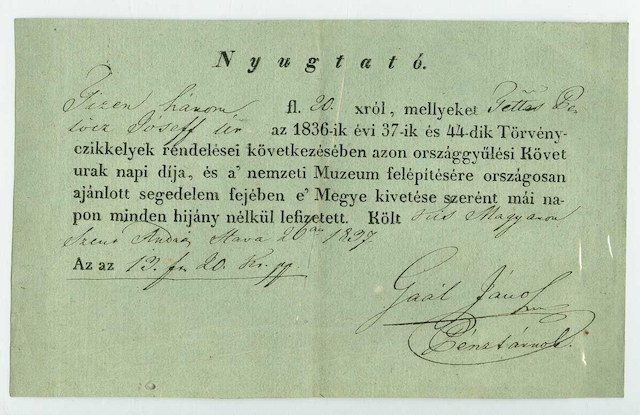
Receipt for the amount donated for the construction of the National Museum (Source: The Collection of Contemporary Documents, Papers and Certificates of the Hungarian National Museum, Inventory number: 1989.3.)
Act 37 of 1836 provided financial coverage for the independent building. Based on the plans of Mihály Pollack, the building in use today was completed in 1847, although a part of it, such as the huge picture collection of Archbishop of Eger János László Pyrker, which he donated to the museum, was open to the public from 19 March 1846. The permanent exhibitions of the National Museum were open for viewing from 24 January 1848.
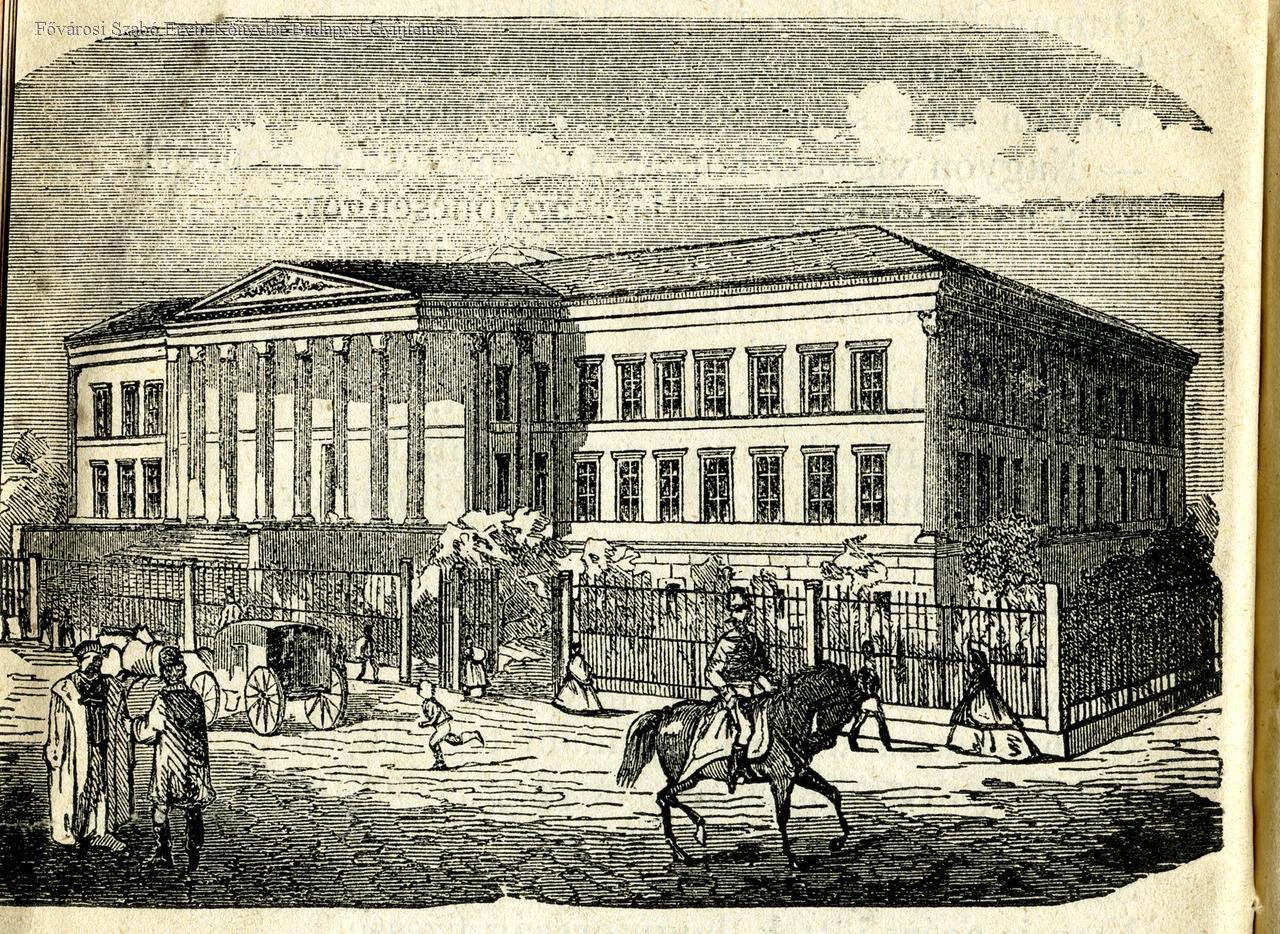
The drawing of the museum from 1867 (Source: FSZEK Budapest Collection)
The question arises, was the museum open to visitors on 15 March 1848, were Petőfi and the revolutionaries avoided by those wishing to see the museum's exhibits on the day of the revolution?
Since 15 March 1848 fell on a Wednesday, on that day part of the museum's gallery could be visited, but only until one o'clock in the afternoon, so at three o'clock in the afternoon, when the company of Petőfi met there, the museum was already closed to the public. The visiting rules were written in the newspapers before the opening, Honderü published the following on 22 January 1848:
"We would like to warn those who want to visit our national museum about the regulations that were established by the decree of the Archduke and Palatine. According to this, the collections are open on weekdays from 9 a.m. to 1 p.m. By name: the treasury, money and antiquities collection on Mondays and Thursdays; the nature department and handicraft collection on Tuesdays and Fridays; the gallery on Wednesdays and Saturdays. Visitors can see other rules of conduct in the official report on the cover of today's paper."
But what rules did museum visitors have to follow? The quote already mentioned the opening hours (which were only temporarily established at the time), so people could go to the museum in the morning except on Sundays and holidays. Opening and closing were signalled by ringing the bell set up in the museum courtyard. Visitors had to leave parasols, umbrellas, sticks and swords or any kind of weapon with the gatekeeper. Children under the age of 10 could not enter alone, while older children could only enter if they had also left their books and textbooks with the gatekeeper.
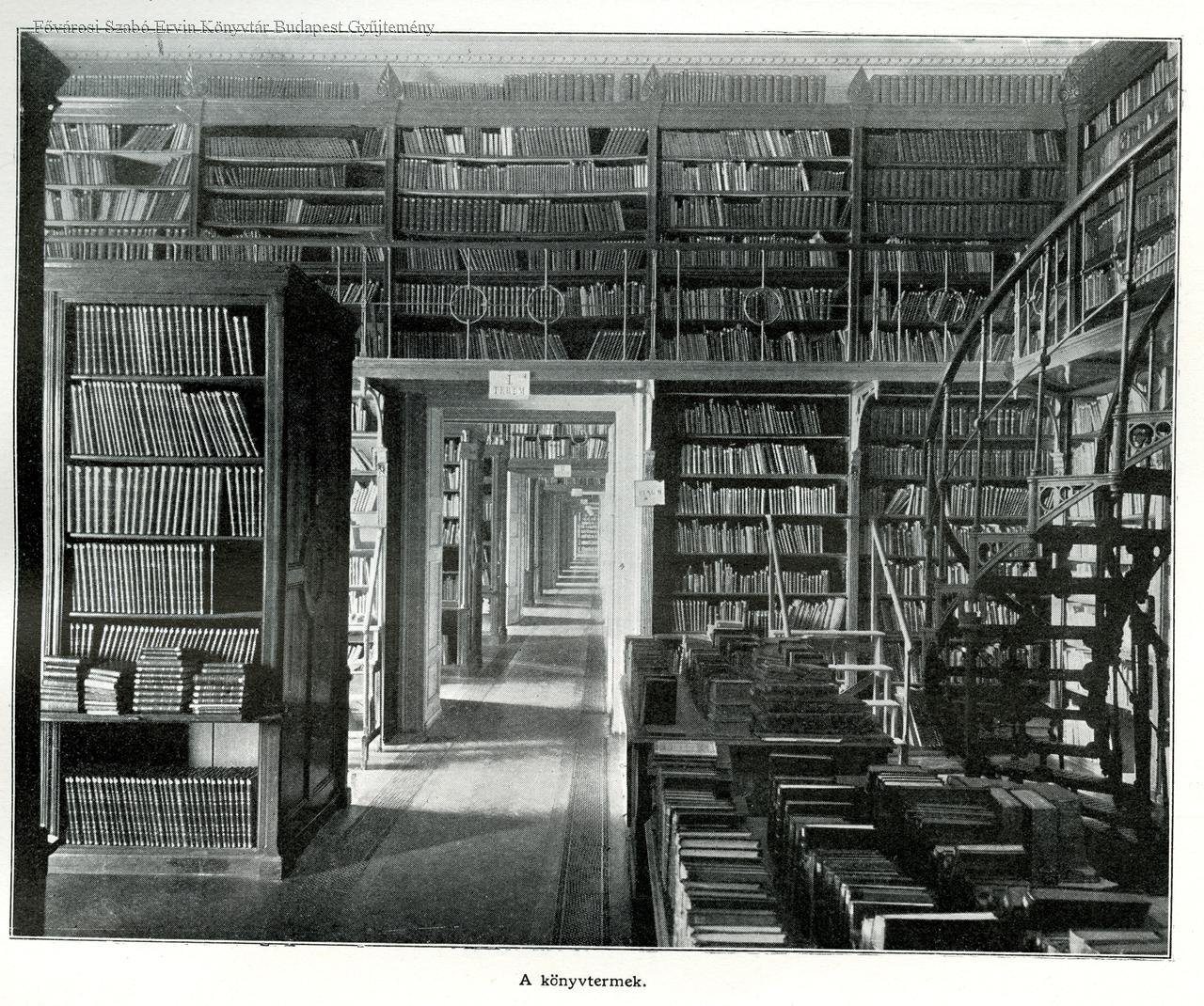
The library collection in the National Museum at the end of the 19th century (Source: FSZEK Budapest Collection)
The attention of the visitors of the museum was especially drawn to the fact that it is forbidden to touch the exhibited objects of the museum. In other respects, there was not really an opportunity for individual visits, there were guided tours, and according to the rules, visitors could not even leave the group, so they could not look around or walk around the halls of the museum alone.
The museum grew with donations. Of course, the palatine was among the donors, but the court, the nobles, and also ordinary citizens donated. A few days before the opening of the exhibitions, the newspapers reported that Antal Reguly had also given his ethnographic material collected in the Ural region to the National Museum.
At that time, the collection consisted of the following units: the library was the first - since this collection was the foundation of the National Széchényi Library. The next collection was the "Collection of Medals, Statues, Antiquities, Jewelleries and Rarities", where the medals and other rarities were collected. The report of the director of the museum, Ágoston Kubinyi, published in the 3 February 1848 issue of Nemzeti Ujság, gives an idea of what they are, according to this:
"1) His Imperial Royal Archduke of Joseph was kind enough to present: a) E sacrificial altar found on the island of the shipyard, (ara voliva) b) and fragments of red marble adorned with foliage. 2) István Nagy, chair of the Exchange Court gave away: a) two biblical images with alabaster engravings, b) a Rafael Sanzio's tile painting, c) a Monor limestone carving. 3) Greek archimandrite Joannovich Pachomius gave a cast-iron picture depicting Joseph running to Egypt with Mary and their baby. 4) Lawyer Móricz Grisza kindly donated a unique spur with a long crest to our Hungarian national museum."
The furnishings were quite poor, one could say that they were "patchy", for example, the above treasures were placed in the serviced kitchen cupboard of a nobleman's castle, but nowhere else was the interior decoration worthy of the building ready.
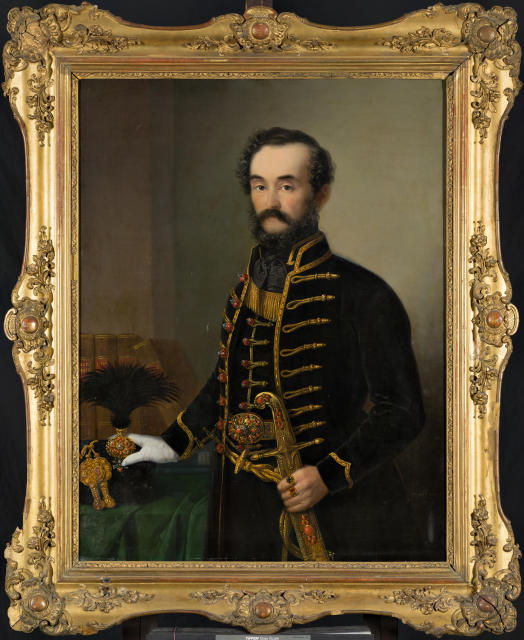
Ágoston Kubinyi, director of the Hungarian National Museum, in a painting by József Pesky (Source: Hungarian National Museum Historical Gallery Painting Collection, Inventory number: 53.237)
The third collection, the picture gallery, was located on the second floor, and the "Nature, handicraft department" was located on the fourth floor, where, among other things, curiosities of the animal world and minerals were exhibited.
The Hungarian National Museum was therefore open to visitors. In the following decades, many collections emerged from this museum, and today it is known as an independent Museum of Ethnography, Museum of Natural Sciences or Museum of Applied Arts, or the National Széchény Library. But in January 1848, the first visitors could only admire the first pieces of these unique collections in the museum, if only they were willing to leave their umbrellas and swords at the gatekeeper.
Cover photo: The National Museum in 1875 (Photo: Fortepan/Budapest Archives, Reference No.: HU.BFL.XV.19.d.1.07.072)

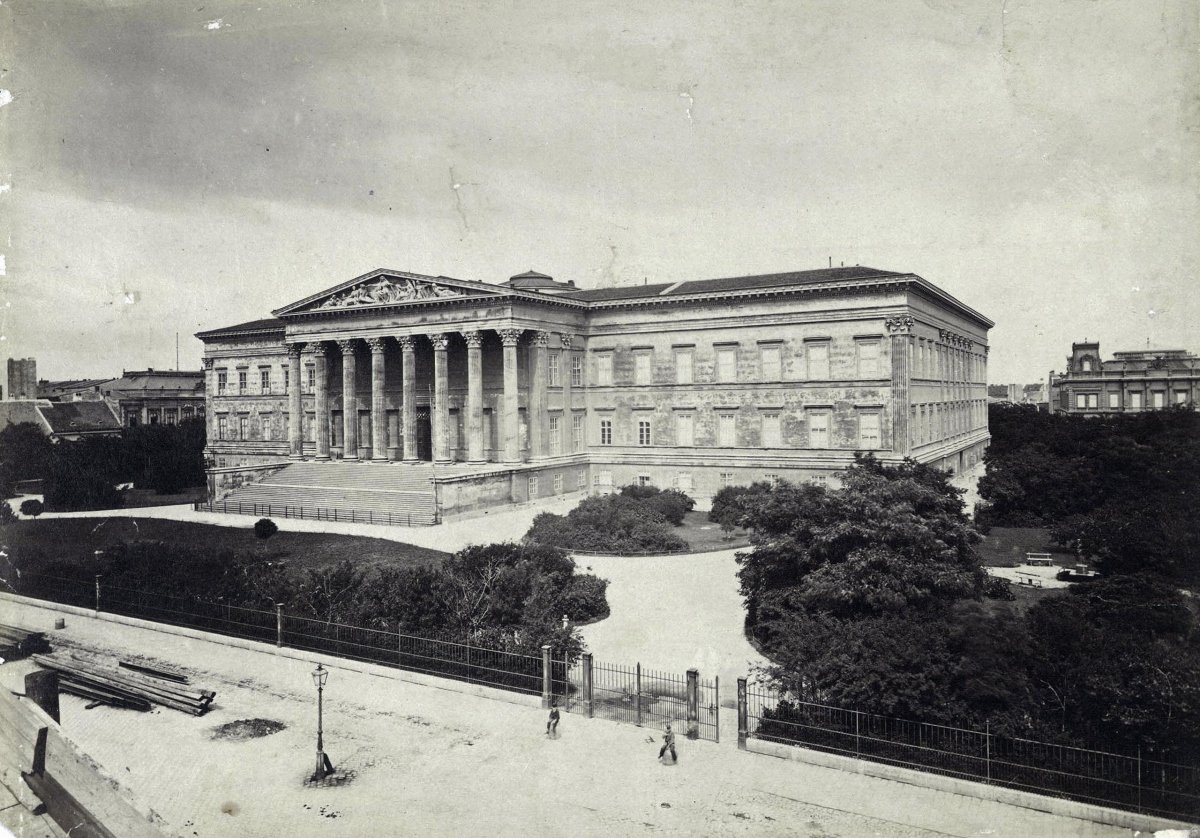


































Hozzászólások
Log in or register to comment!
Login Registration